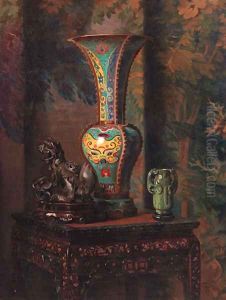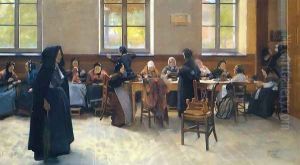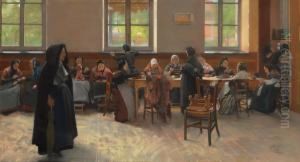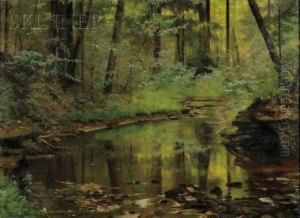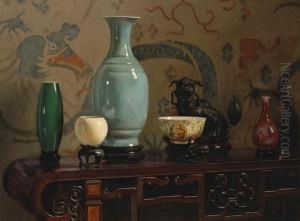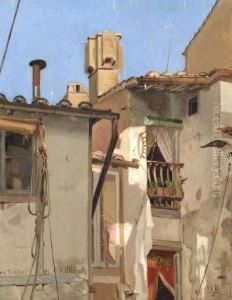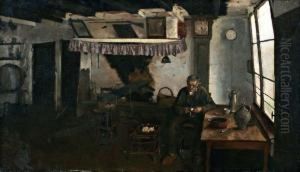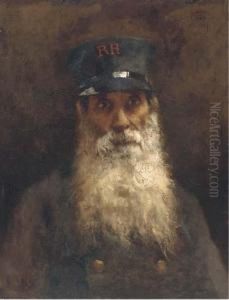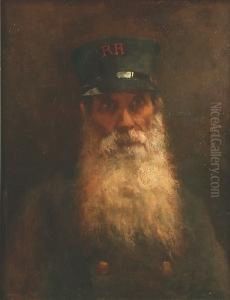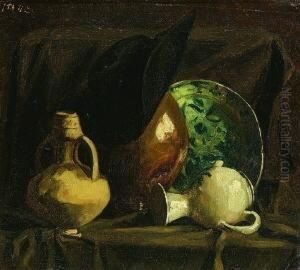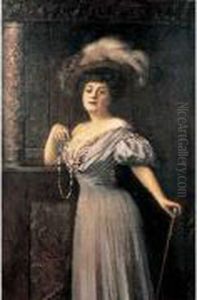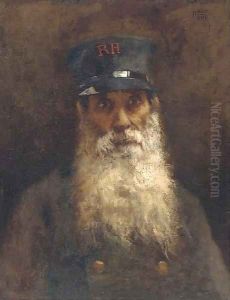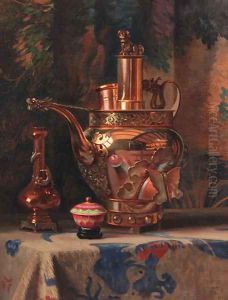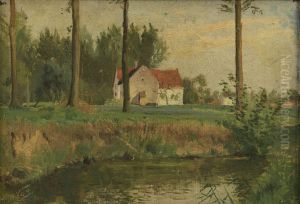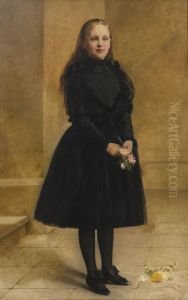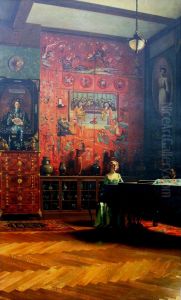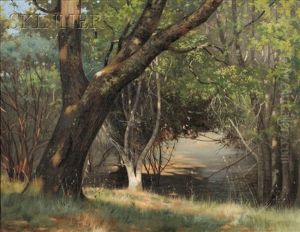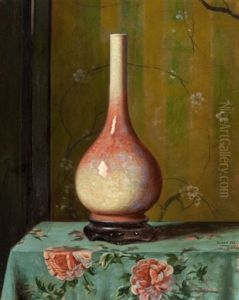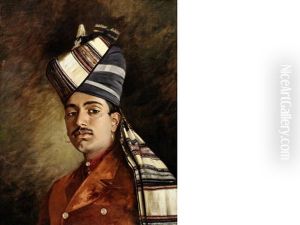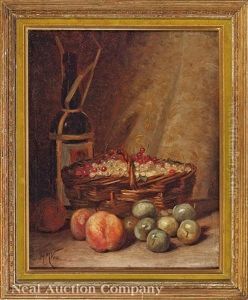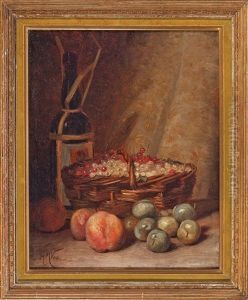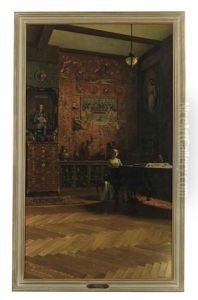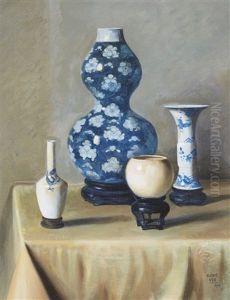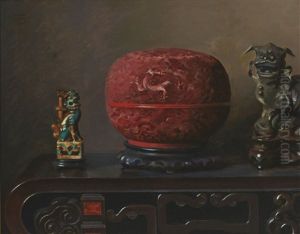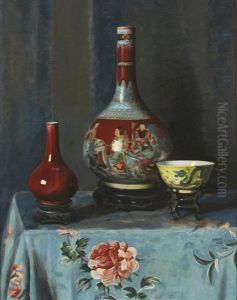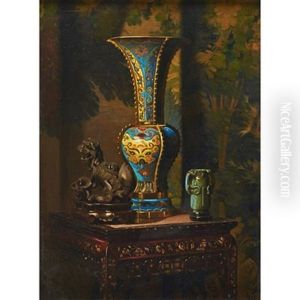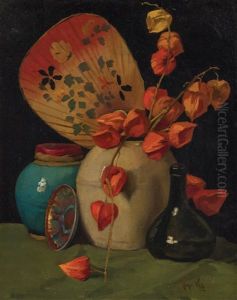Hubert Vos Paintings
Hubert Vos, born on February 15, 1855, in Maastricht, Netherlands, was a distinguished Dutch-American painter known for his portrait work and contributions to international art scenes during the late 19th and early 20th centuries. Vos pursued his initial art education at the Académie Royale des Beaux-Arts in Brussels before further honing his skills in Paris under the tutelage of Jean-Léon Gérôme, a prominent French painter and teacher. His early work was marked by a strong academic foundation, but he gradually embraced more modern influences, showing a keen interest in the effects of light and color, which later became hallmarks of his style.
Vos's career took a cosmopolitan trajectory as he traveled extensively, living and working in various cultural capitals including Paris, London, and New York. His versatility as an artist was evident in his adeptness at both traditional portraits and more experimental works that reflected impressionistic tendencies. Vos was particularly noted for his portraits of high society figures and dignitaries, which were celebrated for their sophisticated execution and psychological depth.
In the late 19th century, Hubert Vos developed a fascination with the East, which led him to travel to Asia, where he produced a series of portraits and scenes that captured the essence of the cultures he encountered. His works from this period are characterized by a vibrant palette and a respectful, insightful portrayal of his subjects, distinguishing him from many of his contemporaries who often depicted Eastern subjects through a more exoticizing lens.
Vos also played a significant role in the international art community of his time. He was a member of various prestigious art societies and participated in numerous international exhibitions, including the World's Columbian Exposition in Chicago in 1893 and the Panama-Pacific International Exposition in San Francisco in 1915, where his work received critical acclaim.
His later years were spent in the United States, where he continued to paint and was involved in the artistic and cultural life of his adopted country. Vos passed away on January 8, 1935, leaving behind a legacy that not only celebrated his technical mastery and artistic sensitivity but also his contribution to bridging cultures through art. His works are held in several major museums and collections worldwide, attesting to his enduring influence and appeal.
